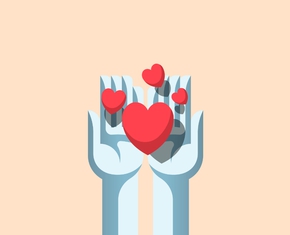The views expressed in our content reflect individual perspectives and do not represent the authoritative views of the Baha'i Faith.
Anger is an acid that can do more harm to the vessel in which it is stored than to anything on which it is poured. – Mark Twain
I shall allow no man to belittle my soul by making me hate him. – Booker T. Washington
Jealousy consumeth the body and anger doth burn the liver: avoid these two as you would a lion. – Baha’u’llah, quoted in Dr. J. E. Esselmont’s Baha’u’llah and the New Era, p. 108.
When was the last time you got really mad?
Think back for a minute and try to remember it.
While you’re thinking about it, let’s talk about how anger works.
The word “anger” comes from the Latin rabies, meaning rage and fury. If you’ve ever seen a rabid animal, you’ll understand the origin of the term.
One of the most universal emotions, all human beings can become enraged, allowing our anger to take control of our bodies, our brains and our actions.
Where does that rage come from? Biochemists and neuroscientists have studied human rage, and discovered that it starts in the hypothalamus, the almond-sized, innermost portion (along with the amygdala) of every vertebrate’s primitive brain. The hypothalamus controls our body temperature, our hunger, our sleep cycles, our sexual drives and our fear-based fight-or-flight response.
Even in mice that have never seen a cat, for example, the hypothalamus produces a hormone that causes the mouse to flee in terror at the sight of a feline predator. This core mechanism, which works immediately whenever any mammal faces a threatening situation, floods our brain with adrenalin and corticosteroids. Those hormones make us want to run away from danger; or conversely, to confront it.
When we make the quick decision to confront perceived threats or danger, several things occur at once. The hypothalamus immediately pumps hormones like vasopressin and oxytocin into the limbic system; the pituitary gland releases massive amounts of adrenocorticotropic hormone; which then makes the adrenal cortex quickly pump adrenalin into our nervous systems. When all that happens, those powerful hormones temporarily increase our physical strength. Adrenalin dulls pain sensations and slows down our time perceptions, which is why people in violent rages report experiencing things in slow-motion.
But those same hormones also drastically decrease our ability to think rationally. We temporarily lose our ability to reason, our prudence and our restraint. Our vision narrows and our hearing diminishes. We “see red”—some people actually experience a pinkish tinge to their vision when rage overtakes them. Our arms and legs can shake and tremble from the sudden flood of adrenaline and oxygen in the bloodstream. Our heart rate increases rapidly, and we hyperventilate. All of these hormonal effects can make us strike out violently, attacking the source of our rage.
 This kind of raging anger can have terrible, permanent, destructive consequences. It can destroy relationships, damage everyone who witnesses it, and injure or kill others. Rage negatively impacts the health of the angry person, too, leading to a highly increased risk of heart attack and stroke.
This kind of raging anger can have terrible, permanent, destructive consequences. It can destroy relationships, damage everyone who witnesses it, and injure or kill others. Rage negatively impacts the health of the angry person, too, leading to a highly increased risk of heart attack and stroke.
So—did you remember the last time you got really mad? Think back on that moment, and recall what you did with your anger. Did it spill over into fury and take itself out on someone else? Or did it harden your resolve to do something constructive; to try to deal with the root cause of your rage?
In that sense, anger can sometimes serve a positive purpose, if we focus it on the causes of tyranny and suffering. Directed against the world’s injustice and oppression, righteous anger can spur people to action and change the world. Many movements and reform programs started when someone got justifiably angry and determined to do something about a fundamentally unfair situation.
So how do we deal with our anger? Since all of us have the capacity for anger and even rage inside us, what inner practice can we adopt that will calm and take charge of the beast within? What can a person do—morally, intellectually and spiritually–to quell and control rage and anger, and turn them to a better, more constructive end?
Please follow along in this short series of essays as we examine the roots of anger, take a look at its causes and consequences, explore what the world’s great Faiths recommend, and try to understand the importance and wisdom of the Baha’i teachings on this crucial human question.
















Comments
Sign in or create an account
Continue with Googleor